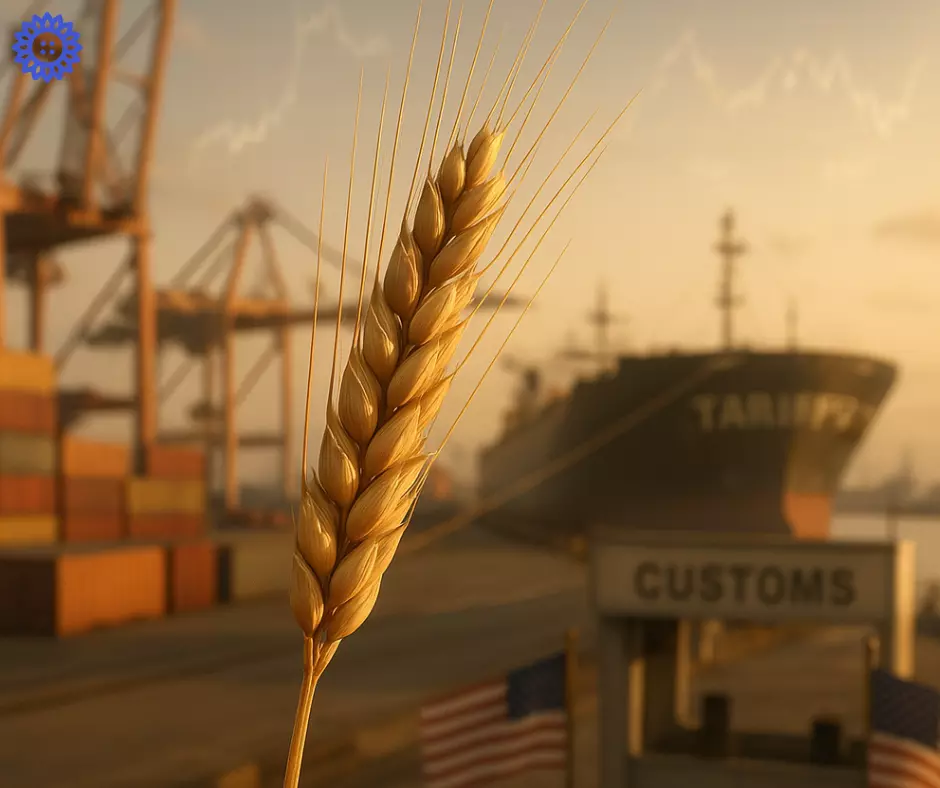07.04.2025, 14:07
U.S. Import Tariffs: New Challenges and Opportunities for Kazakhstan's Grain Exporters
The main impact on Kazakh wheat will be indirect

Structure of U.S. Import Tariffs
On April 2, 2025, President Trump announced new import tariffs set to take effect soon (April 5 for the base rate of 10% and April 9 for elevated tariffs). The tariff level depends on the U.S. trade balance with each country: the base rate is 10%, but for countries with a significant trade surplus with the U.S., tariffs rise up to 50%.
Key partner countries will face the following rates:
• China: 34% (in addition to previously imposed duties),
• European Union: 20%.
These measures aim to reduce the U.S. trade deficit and protect domestic manufacturers but have already triggered concern in global markets and vows of retaliatory actions by other countries.
Market Response and U.S. Wheat Prices
The tariff announcement sparked volatility on commodity exchanges. On April 3, May wheat futures on the U.S. exchange showed the following trend:
• Opening price: $5.424 per bushel ($199 per ton),
• Drop to: $5.258 per bushel ($193 per ton),
• Closing price: $5.389 per bushel ($198 per ton).
The price decline is attributed to market uncertainty: investors fear retaliatory tariffs by other countries could reduce demand for U.S. wheat, redirecting it to other suppliers. However, the price recovery by session’s end suggests the market still sees the situation as temporary turbulence.
Andrey Sizov from SovEcon noted that a shift in wheat demand towards South America, Europe, Russia, and the Black Sea region could benefit those regions. Still, he emphasized that it will take time for markets to adjust.
Wheat Prices in Kazakhstan
On April 3, on Kazakhstan’s Eurasian Trading System (ETS), 3rd class wheat with 25% gluten content was sold at 95,000 tenge per ton (including VAT, EXW-elevator delivery). This is 3,000 tenge higher than the previous day (92,000 tenge/ton).
The price rise may be attributed to several factors:
• Anticipated demand changes: Kazakhstan, as a wheat exporter, could expect increased interest from countries planning to impose countermeasures on the U.S.
• Local conditions: Regardless of U.S. policy, domestic factors (harvest size, logistics, local demand) also affect pricing.
Potential Consequences and Retaliatory Measures
Many countries, including China and the EU, have already announced plans to impose reciprocal tariffs on U.S. goods, including agricultural products. This could lead to:
• Decreased U.S. wheat exports: U.S. wheat may lose competitiveness in global markets.
• Increased demand for wheat from other regions: Kazakhstan, Russia, and the Black Sea countries may benefit if they can ramp up exports quickly.
• Price adjustments: Short-term volatility is likely, but in the long term, prices for wheat from alternative sources may rise due to heightened demand.
In 2024, Kazakhstan exported goods worth $2 billion to the U.S. (including oil, uranium, and ferroalloys) and now faces a 27% tariff. However, 92% of these exports are exempt, and direct wheat exports to the U.S. are minimal.
The main impact on Kazakh wheat will be indirect — through the global redistribution of demand. The potential benefit from this "Trump premium" is appealing but conditional: exports are hindered by logistical bottlenecks (shortage of grain railcars, congested Caspian ports, expensive transit through Russia), tenge volatility, and weak hedging tools eat into margins, and potential domestic quotas or licenses may suddenly close export windows.
Moreover, Kazakhstan’s physical export capacity is already close to its maximum, making a sharp increase in volumes difficult. However, the situation is somewhat eased by the fact that Russia, Kazakhstan’s main competitor, is under an export quota of 10.6 million tons of wheat from February to June, and its 2025 crop forecast has been downgraded.
This creates a short window during which Kazakhstan can maneuver more freely on pricing and secure positions in some markets. But the opportunity is limited: once Russia's quota ends and weather normalizes, its exports may quickly rebound. Thus, Kazakhstan must promptly address logistical challenges, ensure predictable export regulations, and be flexible with pricing to turn this market shock into real gains.